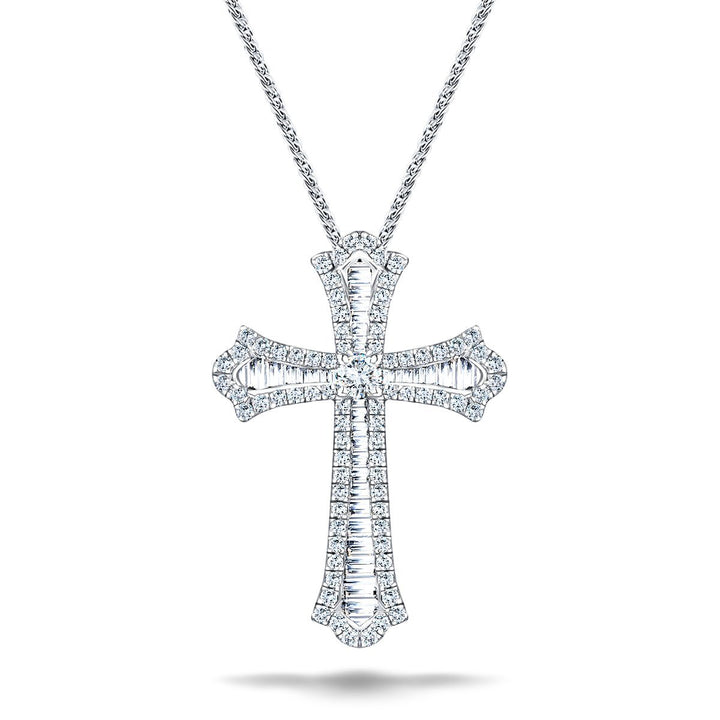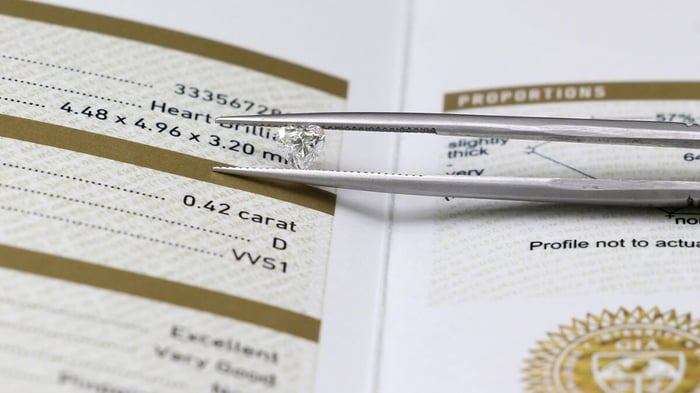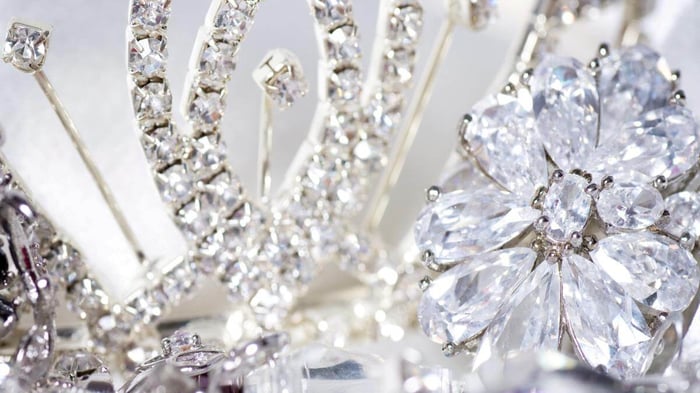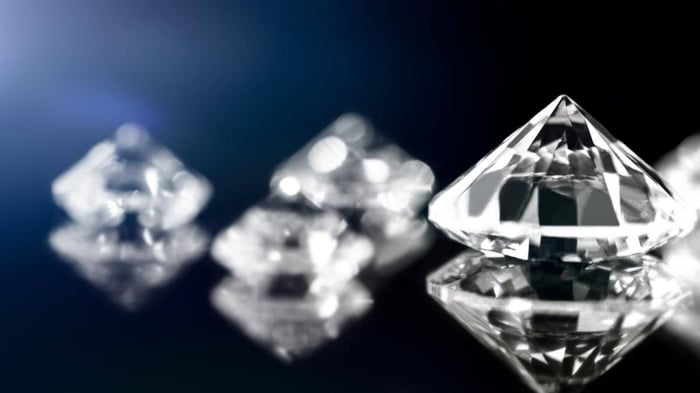What Are Diamond Grades And Certifications?
When you go shopping for diamond jewellery, you want to get the best diamond quality within your budget. You need to know the answers to several questions.
Is the diamond a genuine natural diamond?
Has the diamond been treated to improve its appearance?
Is the diamond of good quality?
Has the diamond been cut well, or is it a poor value because of poor cutting?
The key to getting the best value is understanding the attributes all diamonds have in common and the quality of the diamond you are looking at in comparison to others.
The Four Cs
All diamonds can be assessed and graded according to four attributes: colour, clarity, cut and carat weight. The 4Cs as they have come to be known were developed by the Gemological Institute of America in 1931. By assessing these 4Cs using standard terms and definitions, it became possible to determine, for the first time, diamond quality consistently.
2.00ct Baguette and Round Cut Claw Set Diamond Cross in 18k White Gold

£2,937.00
£4,267.00
Indulge her with a surprise with this sparkling diamond cross pendant. Crafted in 18k white gold, this cross design diamond pendant features channel set baguette diamonds framed by round brilliant micro-set diamonds with a stunning claw set round brilliant cut… read more
The Diamond Assessment And Grading Process

The GIA grading process is as scientific as it is possible to be. An expert gemologist assesses diamond quality under rigidly controlled, standard lighting conditions. Every diamond is anonymously evaluated so that there can be no favouritism for a particular supplier, ensuring consistency and objectivity.
The first test is to discover whether the stone being assessed is a lab-grown synthetic or a natural gem. All synthetic diamonds are removed from the testing procedure and evaluated separately from the natural diamonds.
Next, the gemologist works through the 4Cs. Colour is checked and graded. The less colour the diamond has, the better. The colour scale ranges from Z, a light yellow or brownish tint to D, which is for colourless diamonds.
The colour is assessed by comparing the diamond against a standard range of diamonds of differing degrees of colour.

Next comes the clarity grading. There are 11 grades of clarity running from flawless to I3. The gemologist uses a microscope and a 10X magnification jewellers loupe to see and then plot the inclusions. Because every diamond is unique, this can serve as a fingerprint to uniquely identify every diamond.
The best diamonds will be absolutely flawless with no visible blemishes or inclusions even under 10X magnification. The lowest grade, I3, will have flaws visible under a bright light to the naked eye.
At this stage, the expert will look for evidence that the diamond has been treated to improve its clarity. Treatments might include laser drilling to remove black carbon inclusions or filling of fractures to conceal small cracks. Also, there are heat and radiation treatments that can make a diamond lighter in colour or change the colour completely.
The next stage is to check the quality of the diamond's cut; how well the diamond has been shaped and faceted. This grade is used for round brilliant cut diamonds and has five grades from excellent down to poor.
There is more to cut than the shape to which a diamond is cut. The way the diamond is cut and polished affects the brilliance and sparkle the stone has when light passes through it.
Every diamond is placed in a machine that rotates the gem through 360 degrees measuring the facet angles, each of which reflects and transmits light. The gemologist considers the proportions of the gem, the culet size, the quality of the polish on the girdle, and the gem’s overall symmetry.
When all the measurements have been taken, a Cut grade is generated. This aspect of the diamond has five levels running from Excellent through to poor.
The fourth and final C is the carat weight. One carat is equivalent to 200 milligrams or one-fifth of a gram. Each diamond is individually weighed in a sealed container using an electronic scale accurate to the fifth decimal place, making it very hard to substitute one diamond with another of similar weight.

The final report brings together the measurements of the 4Cs along with other data about the diamond such as its exact size in millimetres, cutting style used, any fluorescence and more.
Each certificate is a unique blueprint for the diamond reported upon. Due to the high value of diamonds, GIA reports are designed to be very difficult to forge or alter. The certificate includes a QR code enabling the reader to check directly with the GIA database to compare the printed report to the version held on file with the GIA.
When you look at a GIA report, you can be sure that you are looking at the information matching the diamond you are looking at. It is an honest, objective assessment of the diamond in question.
Buy Your Diamond Jewellery With Confidence
Even though buying high-quality jewellery is not a cheap business, it can and should be an enjoyable experience. When you have the reassurance of a high quality, well-respected diamond certificate that matches the diamonds you purchase, a good deal of the stress of buying jewellery is removed.
At All Diamond, almost every diamond we sell has a GIA certification so you can be sure that you are buying the genuine article.
You can find out more about diamonds and diamond grading by checking our in-depth articles on the 4Cs and certification. Check them out before you browse our collections for your perfect piece of diamond jewellery.




